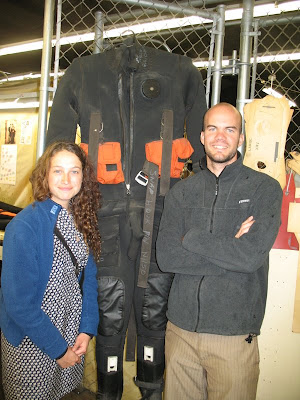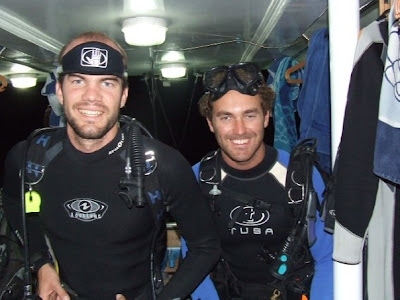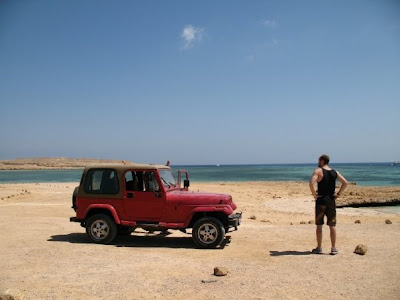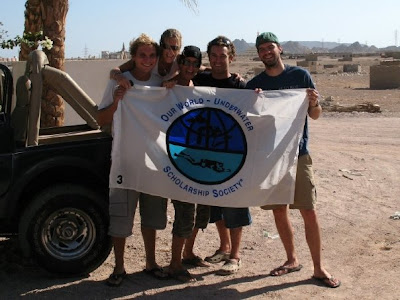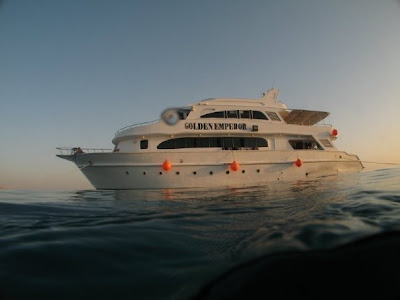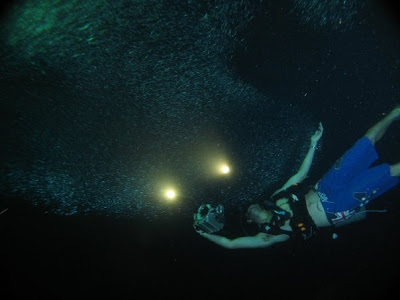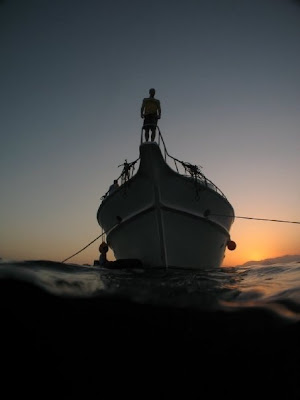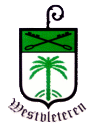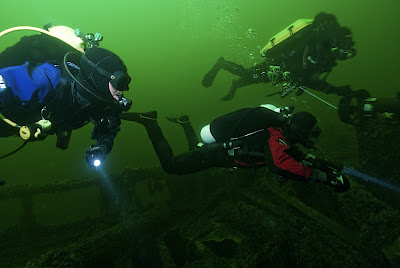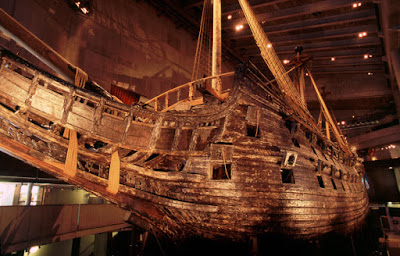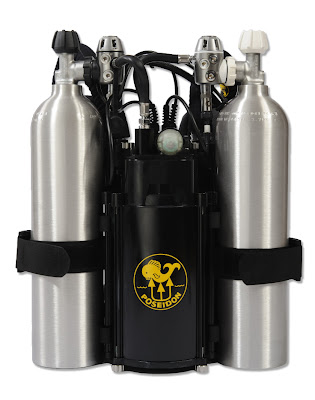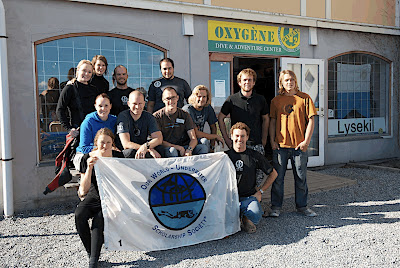A quick look back at the month of August:
August 1st was a date I had been looking forward to ever since the beginning of my scholarship. On July 31st I left my parent’s house in Washington DC and boarded a flight to Copenhagen. I arrived the next morning, met last year’s European scholar Igor Valente at the airport, and traveled together to 2Dive in Copenhagen. Igor, Eline, 2005 European scholar Vibe and myself were guests of Flemming Thyge, the owner of 2Dive and a pro trainer for the International Association for Handicapped Divers (IAHD) in Scandinavia. All of this year’s scholars, as well as any previous scholars who wanted to come had been invited to participate in an IAHD Pro training course at 2Dive. Flemming, his assistant instructor Sole Victor, and another instructor, Daniel Zuidema from the Netherlands would be teaching us how to provide safe diving experiences for handicapped divers. Steve, who was traveling to Europe from Indonesia, would be unable to meet up with us for the IAHD course but would be joining us for the remainder of our time together in Scandinavia. The course took three days and went very smoothly. We learned a lot, had a lot of fun, and had an opportunity to give some handicapped people a chance to try diving for the first time, which was quite exciting. Flemming, Sole and Daniel were great hosts and I’m very glad I had a chance to meet and spend time with them.
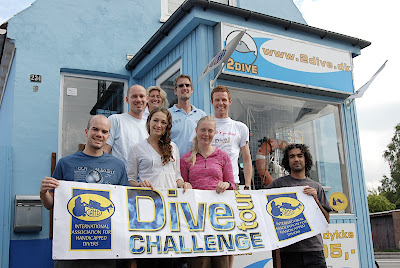
On August 4th Igor and Vibe departed for home and Eline and I met Steve at the airport and traveled north by train to the town of Helsingør. After spending a little time getting lost in the rain, we met up with Christian Rasmussen of Fotodyk.dk for a PADI underwater photo course. Christian not only went through the basics of underwater photography with us but also took a little time to show us around his hometown and introduce us to some traditional Danish food. While in Helsingør we had planned on doing a little wreck diving with Christian and Kjell Evensen from Master Dive, but unfortunately the weather was not cooperating, so we had to settle for a short pool dive and some beer and Thai food.
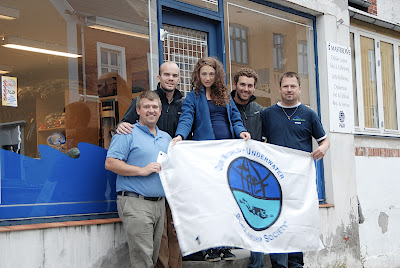
With our time in Denmark drawing to a close (for now) Eline, Steve and I prepared to travel north into Norway. We would be spending a week at the One Ocean Dive Center with Carlo Golfetto in Kristiansand, diving on some of its famous wrecks and working on an article about our experiences with Christian Skauge, the Editor of the Norwegian magazine Dykking. Carlo went so far as to pick us up from our overnight train at 4 am and put us up in his own apartment. The diving was fantastic and we had a great time with Carlo, Christian and Carlo’s divemaster, Trond Jarle Repvik. We even got to spend an evening wakeboarding in a nearby Fjord. Carlo was an excellent host, and it was the first time I had been on a dive boat where all the guests were served endless amounts of delicious pasta, fish soup and espresso!

We were sad to leave the great friends we had made in Kristiansand, but not even that could keep us from being excited about our next stop: Reykjavík! Diving in Iceland was something all three of us had expressed a strong interest in doing during our first meeting in New York in April, and now we were actually doing it. We went into our week in Iceland with very high expectations, and we were not disappointed one bit. Without even considering the hospitality and enthusiasm of our hosts, Tobias Klose and Louis Kotze from Dive.is, the trendiness and excitement of Reykjavík and the rugged beauty of the Icelandic landscape, diving in Iceland was an experience that affected me in an almost spiritual way. Traveling to ϸingvellir and diving into the crevices at Silfra was one of the most incredible experiences of my life. Silfra’s beauty, above and below the water, is compounded by the purity of its freezing water and its geologic and historical significance. I’m fairly certain I’ll never find another place that compares to Silfra as long as I am diving, so I really feel privileged to have been invited there by Tobias.
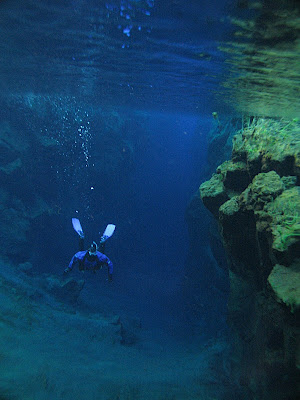
After having a chance to dive in Silfra, we had another unique opportunity to visit the founder of Dive.is, Tommy Knutsson. Tommy has moved on from running Dive.is to work full time with an environmental group he started, the Blue Army. It began as a project to pull dumped batteries out of his local dive site and has grown into a widespread campaign to promote recycling, energy efficiency and environmentalism across Iceland. Although the people of Iceland have been blessed with an incredibly pristine and unique environment, it is not one immune to abuse and it was good to visit with Tommy and the Blue Army and see some of the great projects they are working on.
Just as Eline, Steve and I were falling totally in love with Iceland, and were convinced that there was no way it could get any better than this, Tobias played his ace in-the-hole. Louis, Eline, Steve and I drove 6 hours from Reykjavík to the north coast of Iceland to see the Strytans. These are a series of geothermal chimneys discovered on the bottom of a fjord in 1996. The largest rises over 55 meters from the seabed, spewing hot mineral rich water into the freezing arctic water of the fjord. The chimneys are not only fantastic and unique in a geological sense, but the life they draw is equally incredible. Huge schools of Cod and Coalfish black out the sun, making a torch a necessary piece of equipment while diving the Strytans. Not only were we staying in a farmhouse beside an incredibly beautiful fjord on the edge of the Arctic Circle, diving on one of the most unique geologic formations on Earth, but we also got to do it with the man who discovered the chimneys, Erlendur. Erlendur and his friend Siggi were fantastic guys and great divers, and you could tell they were very excited to share the Strytans with us. Siggi even invited us to come diving off of his boat later that evening. Knowing that it would be our last chance to dive in Iceland, we drove North to Olafsfjorður and headed out to dive one of his favorite spots, a kelp forest that lay below the tallest cliffs in Iceland (over 600 meters high). The dive was just incredible and it was an excellent way to conclude our diving in Iceland.
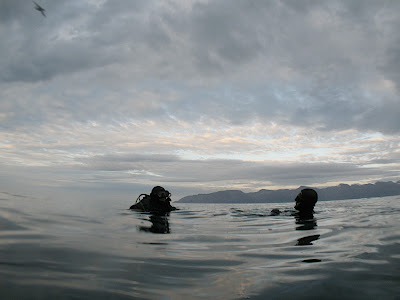
After promising ourselves that one week was not nearly enough time to spend in Iceland, and that we would all be coming back next year, Steve, Eline and I set off for Göteborg, Sweden. We were met at the airport by Johan Enqvist a partner and co-founder of Oxygène Diving. After going to lunch and taking a quick tour of Oxygène Göteborg, Johan drove us up the coast to Lysekil, where we would be spending a few days diving with Daniel and Susanne Dahlströhm, managers of Oxygène Lysekil. Johan had said that what exactly we would be doing there was going to be a surprise and something that could only be done almost exclusively at Oxygène Lysekil. None of us were able to unravel the mystery, but when we finally arrived we were excited to learn that we were going to be trained to pilot ‘dragons’. Originally used to search large areas of the sea floor for mines, unexploded ordinance, etc. dragons are basically a diver driven sled towed behind a boat, complete with a canopy, stabilizing tail fins and two wings used by to pilot to turn, ascend, descend or spin the dragon. Over the next few days we had a great time with Daniel and the rest of the Lysekil staff learning to fly the dragons and exploring Lysekil. Not only was dragon diving a blast but the people working at Oxygène Lysekil are a fun and close knit group, and we spent our ‘down-time’ exploring the rocks and caves that surround Lysekil, going boating, on cookouts and having a great time with the people we met there.
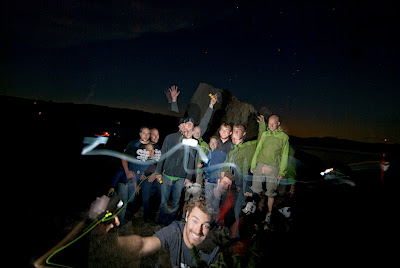
After leaving Lysekil, the three of us had a chance to visit Poseidon Diving Systems in Göteborg. We got a personalized tour of the facility from Jörgen Nilsson and by pure chance got an opportunity to test out a prototype of the new Cis-Lunar MK. 6 Discovery rebreather. Jörgen had thought that there wouldn’t be a unit available for our visit, but the design manager happened to be demonstrating a unit for a distributor so Eline, Steve and I became the first non-Poseidon divers to test the new unit. Although we were a little disappointed we didn’t get to take a MK. 6 home with us, we had a great time at Poseidon.
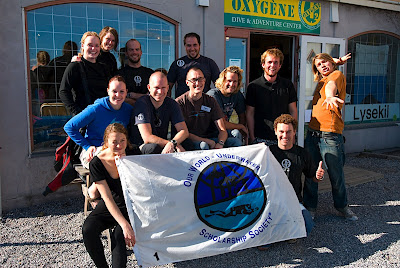
At this point our threesome split up for a few days. Steve headed north to Oslo, while Eline and I traveled to the Baltic coast of Sweden to visit Fred Hocker at the Vasamuseum in Stockholm. Although Stockholm and the Vasamuseum were great fun and incredibly interesting, it was the kind of place that I would have liked to spent a longer and more in-depth time visiting. The Vasa was a warship commissioned by the king of Sweden in 1624 and eventually sunk in Stockholm Harbor. Its story spans hundreds of years, and although I’m a total amateur when it comes to archaeology, the work performed by Fred and others that’s on display at the Vasamuseum is fascinating. I know that Delia spent a long time working with Fred at the Vasamuseum and I can certainly understand why.
After chilling out for a few days with Flemming again in Copenhagen for a few days, Eline and I were happily reunited with Steve and headed south to meet up with our Scandinavian coordinator Lars Kirkegaard and Jesper Østergaard from the Stevns Dykker Skole. Were there to take an IANTD wreck diving course. The course was a first for me in that there were five students and six instructors! Besides having a chance to learn about wreck and technical diving from a variety of different viewpoints, Eline, Steve and I got to go wreck diving in the Baltic with a group of safe, fun and totally awesome Danish wreck divers. We were able to make several reconnaissance and penetration dives on the wrecks of the Vapper and the Minos as well as try out some scooters.
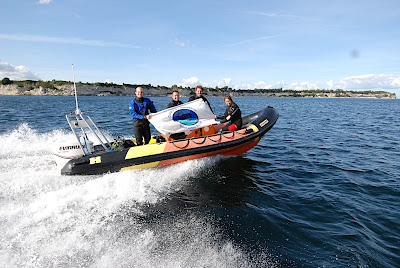
Although it sometimes seems like August has flown by, when I stop to think about all the incredible experiences we’ve had in Scandinavia, I realize that we did A LOT this month, and we’re not finished yet! The best part is that whenever we were short on sleep or dreading getting onto another train or bus, we were still more stoked than ever to put a tank on our backs and jump into the water.







